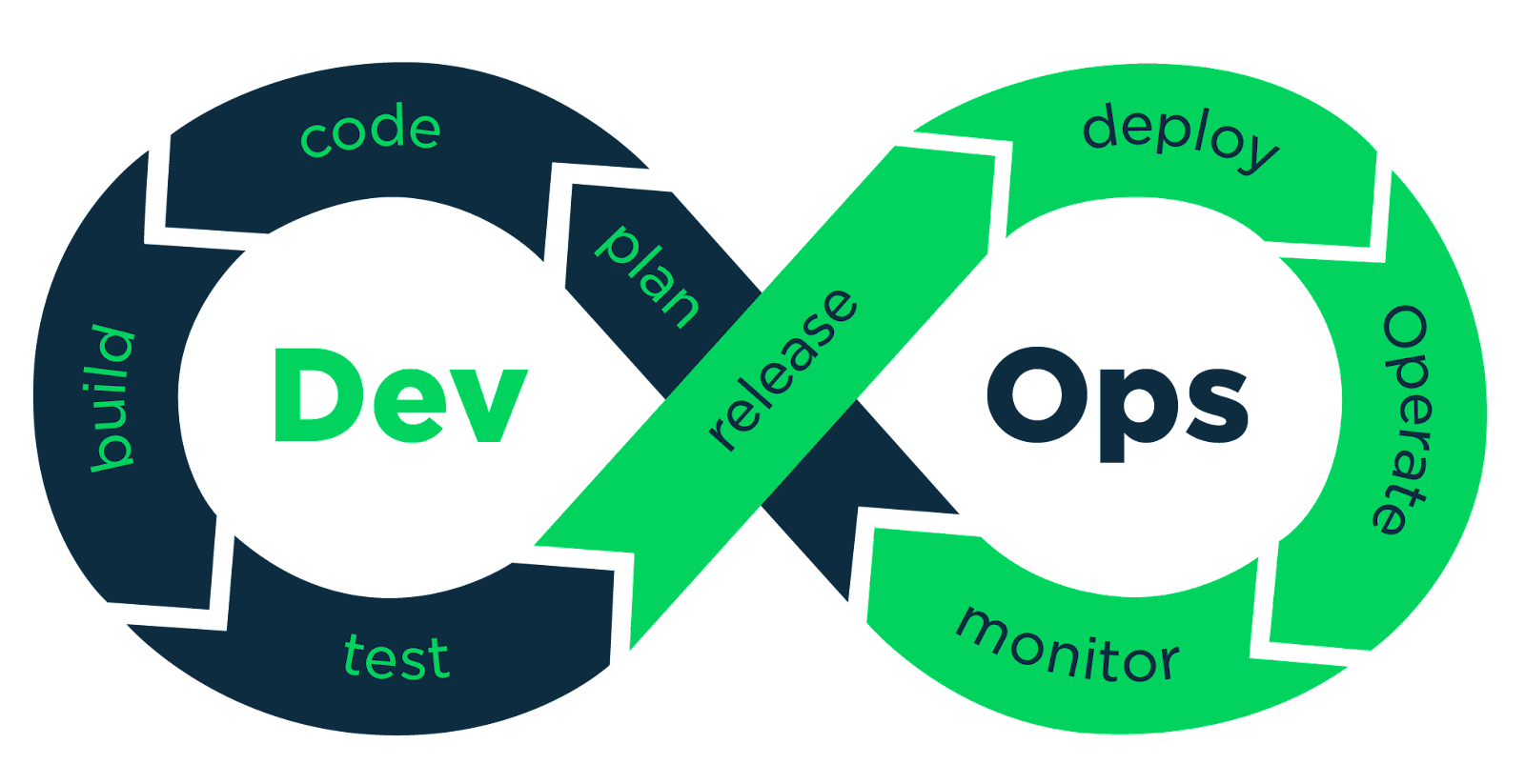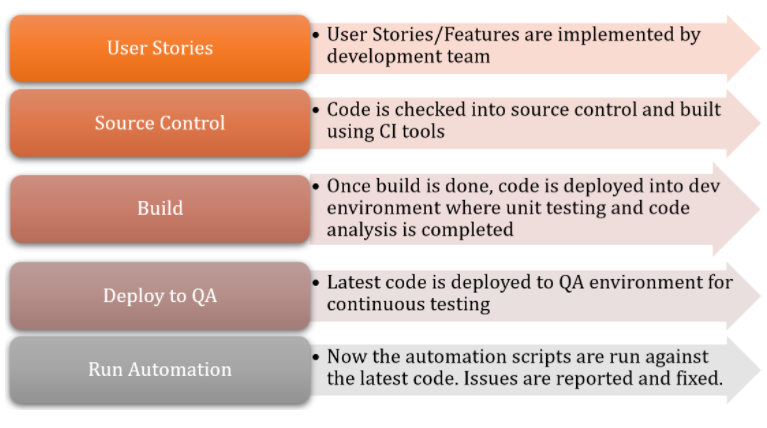How to Create a DevOps Workflow Strategy?

DevOps involves a lot of different tasks, so it’s paramount for there to be some kind of structure in place to keep things organized. Otherwise, all the various tasks may get mixed up and greatly reduce your efficiency.
This is the last thing anyone wants in DevOps, so many companies adopt a DevOps workflow to add some method to the madness. Along with a structure, implementing tools (like Instatus) that automate key aspects of the workflow is crucial. It’s all about using the right tools and techniques in tandem to reach optimal efficiency.
Before we dive in, let’s start by explaining the basics behind a DevOps workflow.
What is a DevOps Workflow?

A DevOps workflow is essentially a sequence of tasks and the order they go in. The workflow is also known as the DevOps lifecycle, and it consists of 6 different phases (or 8 smaller phases). It allows you to visualize the various steps involved in DevOps and how they correlate with one another.
Each workflow stage describes what specific actions must be done along with the desired results. You’re given a clear set of goals to aim for to ensure everyone stays on task. As you progress through the workflow, you can make adjustments and automate certain steps to increase your overall efficiency.
How Does a DevOps Workflow Benefit You?
Promotes Agility
A DevOps workflow separates tasks into smaller steps, making the processes easier to carry out and adjust if necessary. If any issues occur, you can quickly pinpoint them to a certain step and assess what went wrong. Working incrementally like this gives you more opportunities to improve your DevOps strategies to reach a higher level of productivity.
Allows Technical Scalability
There’s lots of continuous development and DevOps testing involved in these workflows, which give you many opportunities to upgrade your tools and technology. With constant monitoring and regular updates, you can keep your product up-to-date and running smoothly to increase customer satisfaction.
Promotes Business Innovation
With a DevOps workflow, you’re able to deploy software updates much more rapidly, allowing your developers more time to experiment with innovative products or improve upon existing ones. DevOps teams can sufficiently test out these new features without disrupting any other projects.
Six Phases of a DevOps Workflow
Continuous Development
Continuous development is the stage where you plan and build software products and features. You outline your vision for the product, and DevOps developers bring those ideas to life through coding. This code is usually managed in version control programs like GitHub.
Continuous Integration
In continuous integration, developers make changes to the code before merging them into the central repository. This integrates the new code with the existing build, so everyone can access it.
Continuous Testing
This stage involves testing your software for any issues that could affect user experience. If any are found, you can return to the development stage and work on fixes.
Continuous Monitoring & Feedback
In this stage you monitor your software performance, infrastructure, and user activity to see how well your product functions. Evaluate how each update impacts user experience and how you can improve your future releases.
Continuous Deployment
In the software deployment stage, you release your application or update it and make it available to your users. The aim is to release products quickly without compromising quality.
Continuous Operations
This phase involves reducing the amount of scheduled downtime for your software—usually in the form of planned maintenance. The objective is to increase your uptime, making you more reliable to customers. Updates can be made without taking your server offline via special tools like Kubernetes.
How to Create a DevOps Workflow Strategy
1. Identify the Current State of Your Software Development and Deployment Processes
Look at your current DevOps strategy and how you’re carrying out the different processes that make up your current workflow. Identify any problems you’re having so you know what to improve upon when creating your DevOps workflow.
Not sure where to start? Here are some questions you can use to structure the process:
- Are you encountering lots of software errors after deployment?
- Are the different DevOps tools integrating well together?
- How many people are in charge of each step and are they working efficiently?
- Does everyone understand the tools involved in the DevOps process?
2. Define Your Goals and Objectives
Next, determine what you want to achieve with your new DevOps workflow strategy. Here are some questions to get you started:
- Are there any steps you wish to automate or streamline?
- Do you need to upgrade your infrastructure more often?
- Do you need a faster release schedule?
- Do any tools need replacing?
- Is your uptime high enough?
Your objectives will help determine what tools and techniques should form the foundation of your new DevOps workflow strategy.
To give a simple example, let’s say your goal is “to automate the monitoring and availability updates”. In this case, you’ll definitely need to invest in an automated monitoring tool and a status page tool Instatus.
Integrating the two will automatically notify team members and users whenever issues or downtime occur.
3. Develop a Plan for Implementing the Strategy
Now that you’ve got your goals established, it’s time to come up with the actual strategy and how you’re going to implement it. Make sure all relevant parties get their say in this, especially DevOps teams since they’ll have to use the new strategy.
Once everyone’s had their input, lay out your new DevOps workflow. With regard to implementation, it’s best to test out the new techniques and tools first to see how effective they are. Are they truly better than the previous ones? Do they cause any errors that disrupt the DevOps process?
If you’re struggling to come up with a workflow outline, start with ways to improve a single step or problem. Create a list of different solutions and pick the one you think will work best.
4. Choose the Right Tools and Technologies
It’s vital to choose your tools and technologies carefully when formulating your DevOps workflow strategy. There are many great automation tools available for every phase of the workflow, so it depends on your budget and specific goals which ones you choose. Just keep in mind that these tools and practices must function well together and create a seamless workflow.
Here are some examples of tools that help automate or streamline DevOps processes:
Try testing out some tools in conjunction with one another to see if they make a good team. Some tools are open-source and free, so keep an eye out for those if you’re on a budget.
5. Automate Processes Wherever Possible
You should aim to automate as many steps as possible to increase the speed of your DevOps. For example, you can automate software monitoring and incident communication with Instatus.
Instatus lets you create your customizable status page, allowing you and your customers to constantly monitor your uptime. This helps reduce the number of tickets you receive whilst building a level of trust with your users.
You can set up a beautiful status page for free and upgrade to pro at any time. There are no team limitations, so any team member can update the status page. Customers are also notified when updates occur via SMS, email, Slack, and more.
6. Implement Continuous Testing and Feedback
Every DevOps workflow can benefit from a regular feedback system. Continually test your software to check for bugs and pay attention to feedback from your team members. Testing should occur throughout the DevOps process but especially during development. The goal is to ensure no major bugs occur after deployment.
You can conduct automated tests periodically to eliminate the need for constant manual testing. Whenever changes are made to your software code, tests should be carried out. No matter how minor the changes may be, it’s still worth testing because you never know when errors may pop up.
The following image details the individual steps involved in continuous testing:

7. Measure and Optimize
Now that you’ve formulated your new DevOps workflow, implement it and keep track of how well it performs compared to the previous strategy.
- What has improved?
- Have your previous problems been solved?
- Are there fewer issues occurring?
- How rapidly are you able to release new products?
- Has your uptime increased?
Use a set of DevOps metrics, such as deployment frequency and mean time to resolution, to measure your new workflow’s efficiency. You should also consider how much this workflow costs (is it cheaper?) and whether your resource consumption has changed.
Conclusion
Your DevOps workflow plays a big part in organizing your DevOps activities, so it’s essential to create a strategy that’s easy to follow without compromising efficiency.
There are lots of steps involved in DevOps workflows, but you can boil it down to 6 main phases. Each phase can be automated in some way with the help of special tools like Instatus. Here at Instatus, you can set up your own beautiful status page in just 10 seconds.
Get your status page for free today to automate your software monitoring.
Get ready for downtime
Monitor your services
Fix incidents with your team
Share your status with customers



